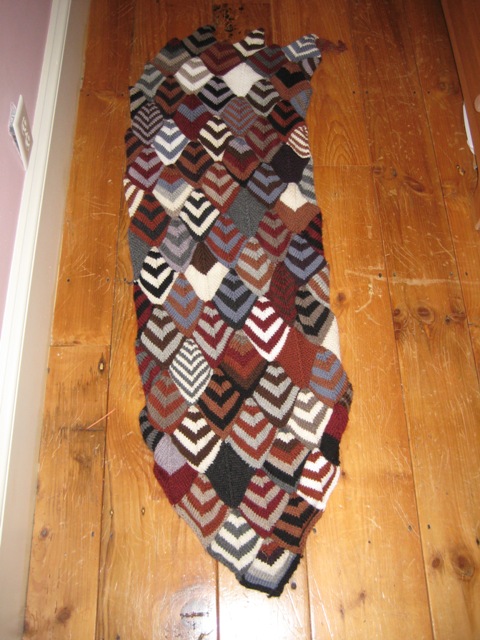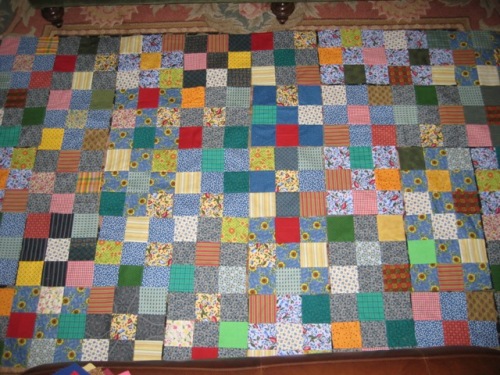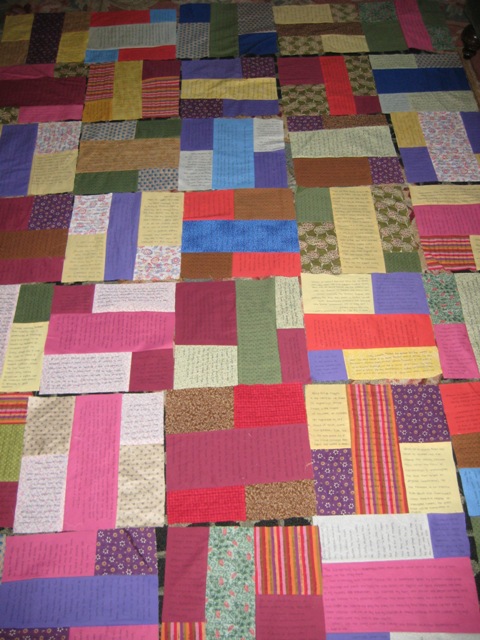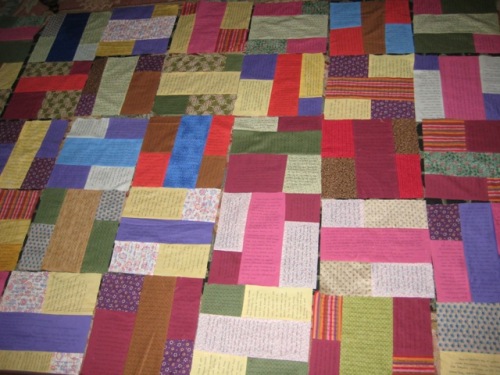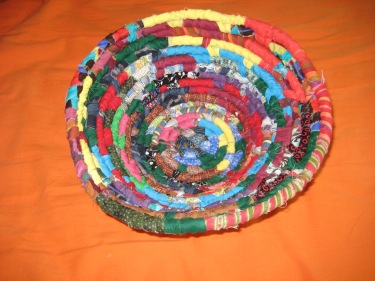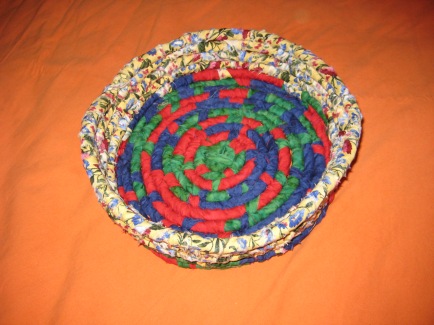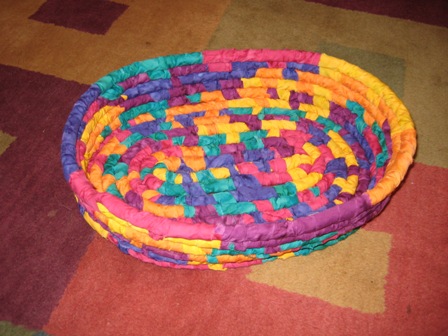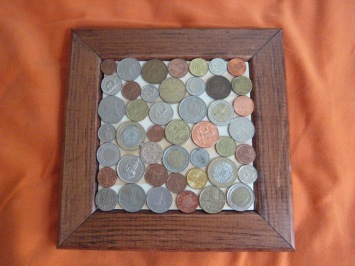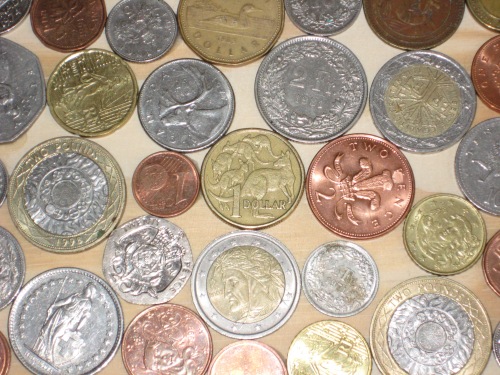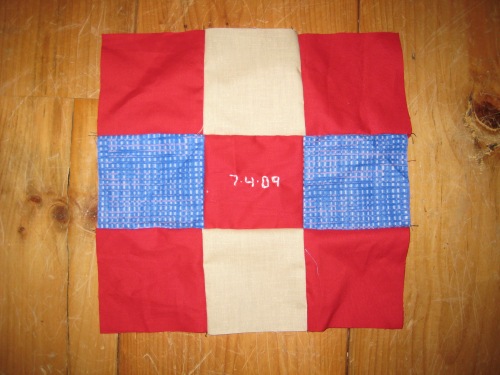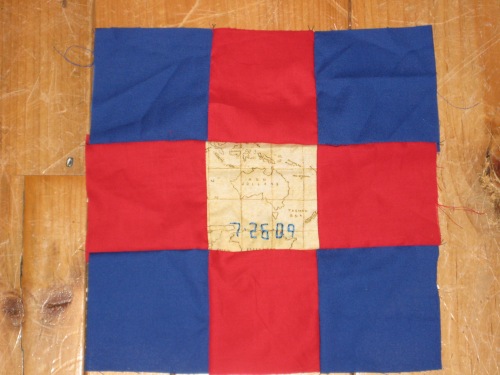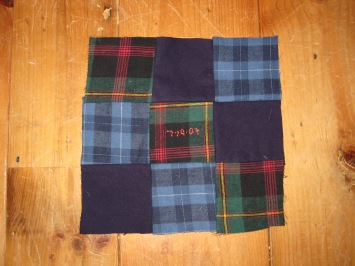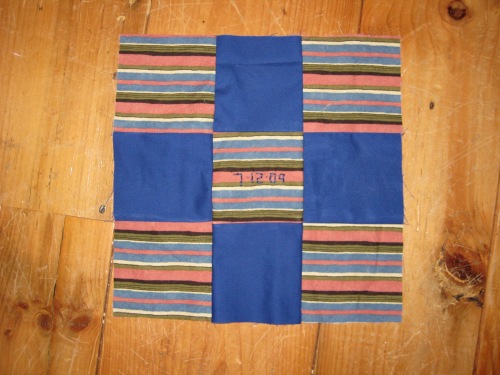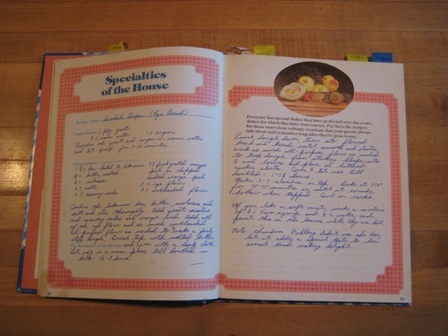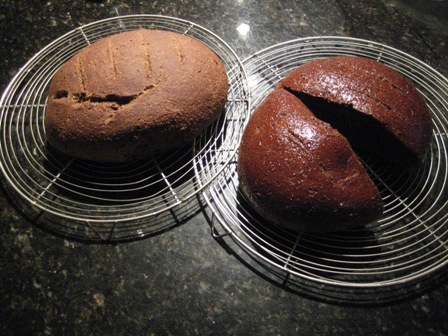Whenever you embark on a trip, there’s a wonderful sense of anticipation that comes from all those things you are expecting to happen. In the case of this New Zealand-Australia trip (which consisted of the following itinerary: Auckland, Rotorua, Christchurch, Cairns, Melbourne, Tasmania and Sydney), I’d been looking forward to scuba diving in the Great Barrier Reef, visiting hot springs, seeing the Sydney Opera House, petting (and eating) kangaroo… all of which occurred, and didn’t disappoint in the least. But there are also those wonderful, unanticipated events that truly give an experience character and offer some of the most lasting delight. This trip was also full of those, and since I’m currently writing this at the two-hour point in a fourteen-hour flight from Sydney to Los Angeles, I might as well start from the beginning…
It didn’t take me long after arriving in Auckland to figure out that New Zealand abounds with a unique and bizarre type of yarn which I was only vaguely aware of before: possum fur. Now, this may sound horrific, but New Zealand possums are actually quite different than those we have in the States, and they are enormously destructive to the countryside. Their fur, when blended with wool, makes for incredibly soft, cashmere-like knitting. Of course, I’m intrigued by any unusual fiber and I immediately set my heart on purchasing some of this yarn. While I didn’t find any in Auckland where most of the possum is in finished products sold at tourist shops, I was delighted to discover an Arts Center in Christchurch (http://www.artscentre.org.nz/) full of handmade crafts (from woodwork to fiber arts) as well as locally spun yarn. I bought myself a red skein of Touch Possum Yarn (40% possum fur, 60% wool) and my boyfriend purchased eight skeins of grey for me to knit him a sweater. I’m sure any knitter would agree that the gift of working with lovely yarn is as good as it gets; even better when the end product is for someone I love.

Another welcome surprise came during the three-hour car ride from Auckland to Rotarua when we stumbled upon the Tirau Quilt Cottage (Sth Waikato, NZ, www.tirauquiltcottage.co.nz). Seeing the word “quilt” on a storefront so far from home is an immediately comforting (and exciting) feeling. Of course, I had to run inside. The woman who owns the shop was an avid quilter (who makes both traditional and nontraditional ‘art’ quilts) and extremely friendly and happy to chat with an excited American tourist. She even informed me that Quilting Arts Magazine (my future employer) is ‘her bible’- it’s a small world after all! Since my weary and patient traveling companions were waiting in the car, I tried to be as brief as possible and quickly selected half yards of two very New Zealand quilting fabrics. One is of the kiwi fruit, which to my surprise is quite popular in New Zealand, and the other is of the rare and endangered Kiwi bird which only exists in New Zealand and is one of the most unusual and adorable creatures I’ve ever seen:
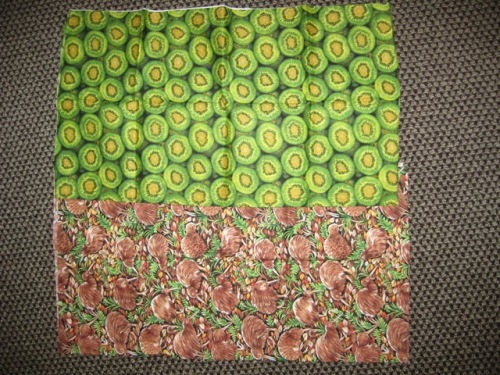
My few days in Cairns were spent either in the rainforest or underwater, and during my time in the bustling, beautiful city of Melbourne I didn’t see much in the way of yarn or fabric stores (though I’m sure they exist). Unexpectedly, the most glorious fiber-filled place that I visited was Hobart, Tasmania. Like most who travel to Tasmani, my brother, boyfriend and I tagged this unusual destination onto our trip with one primary objective in mind; to see Tasmanian devils. In fact, we drove directly from the airport to a devil sanctuary and spent nearly an hour watching them feed on wombat meat- yes, it was worth it. But I had no idea that Hobart itself would be such a charming little city, so closely aligned with my personal passions. The main streets are full of antique shops, yarn stores and fiber art galleries. The first day there, practicing serious self-restraint, I made three purchases. Firstly, I bought 100% Tasmanian Alpaca wool yarn, hand-dyed by the Spindle Tree Designer Crafts Co-Operative Society, Ltd. (www.spindletree.com.au). I also purchased several balls of Merino Magic yarn, made by Heirloom: The Australian Yarn Company, made from 100% pure new wool.

I have no specific project in mind for these yarns; this isn’t the point. I simply couldn’t pass up the opportunity to acquire a sample of such unique fibers. I’m sure the right project will present itself one of these days. Finally, I bought a 1960s bedspread at a funky little antique store called Kookaburra. I loved the pattern and colors, and the entire thing cost only cost 20 Australian dollars (so about 16 US dollars). It has that soft, worn-in feeling that makes old fabrics so appealing, and seems to lend itself to clothing… I’m imagining a skirt, or possibly even a jacket.
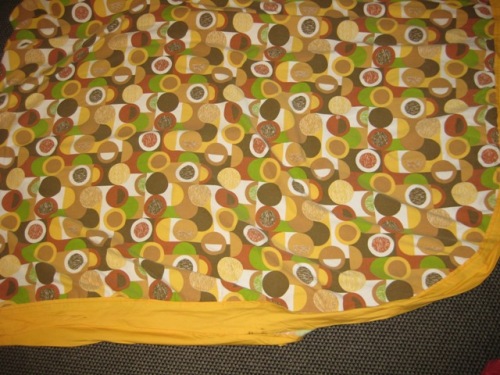
But that’s not all. In Hobart, the main road is shut down on Saturdays for the well-known Salamanca Market (which consists of endless stalls of handmade goods, from fruit leather to honey and fudge… and of course, lots and lots of fiber. I made two purchases that I instantly fell in love. The first is a reversible patchwork skirt, designed by a local Tasmanian designer. I’ve already worn it several times, for dinners out in Sydney:
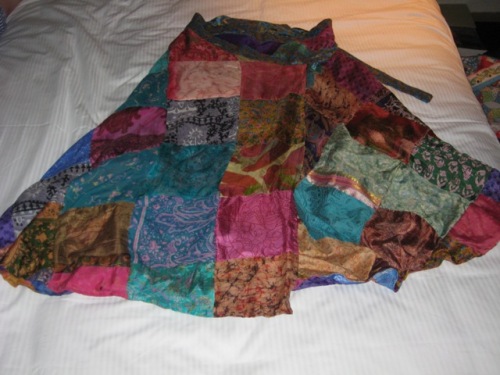
I also bought a very unusual shawl-like wrap with sleeves… hard to describe, but like nothing I’d ever seen. It was also designed by a local (the company is called Keshet) and made of hand-dyed fabric-like yarn that is then woven. I’m quite capable of knitting my own sweater but have basically no weaving experience, and feel like it makes more sense to purchase something that I can’t make myself (not yet anyway). It’s also full of color which, it goes without saying, always wins me over. I also wore this constantly while in Sydney, and I don’t think I’ll fall out of love with it any time soon:
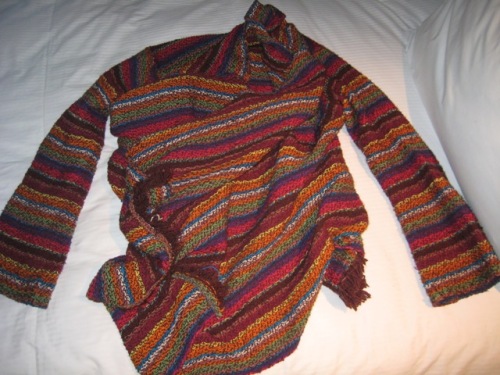
Our few days in Sydney were the perfect way to end the trip- lovely weather, lots of walking, a trip to the beach and no agenda besides enough sleep and good food. It wasn’t until the evening of our last day that fabrics once again entered the pictures. I was vaguely considering how nice it would be to find some unique Australian fabrics, but a brief look in Lincraft (think the Australian version of Michael’s) turned quilting fabrics not that different than what you can buy in the states- and they were actually made in China! I had all but given up when I spotted these Australian Made Handkerchiefs by Bulurru (www.bulurru.com) in a cheesy tourist shop that we’d entered to investigate the kangaroo scrotums we saw in the window (possibly the weirdest souvenir possible; and no, we didn’t purchase one in the end).
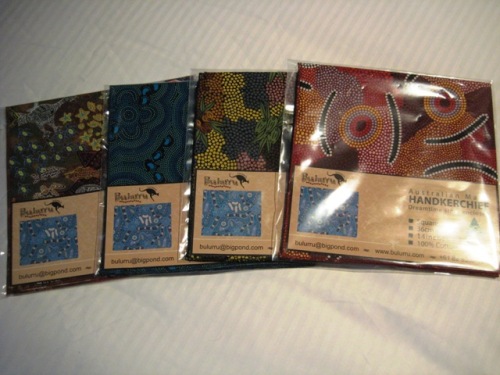
Though these little plastic packages looked silly at first, they’re actually lovely swatches of fabric, each 100% cotton and based on various Aboriginal designs. They even come with “Dreamtime Stories” related to the fabric’s pattern. Turns out, they were exactly what I’d been looking for and I ended the trip having accumulated the most wonderfully unexpected and interesting conglomeration of yarns, fabrics, fibers and more.
Of course, in addition to all these encounters with the new, my own patchwork projects have been trusty and much-needed companions throughout the trip. First of all, working on my neutral domino scarf was nothing short of essential for passing time during the many long car rides and total of 10 separate airplane flights! Unsurprisingly, it’s coming along quite well (and I still have many hours of travel to go):
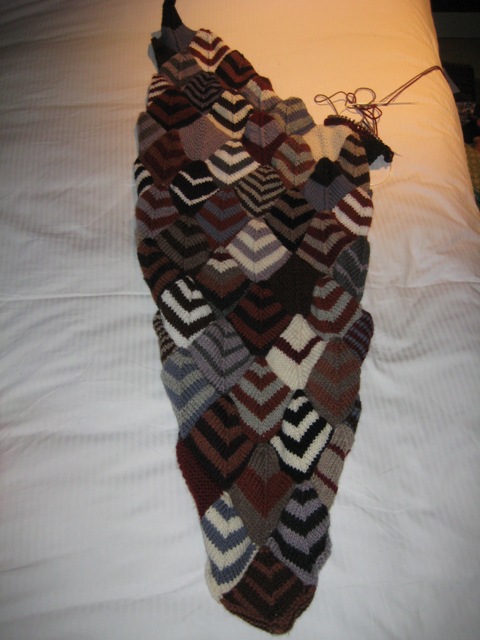
Finally, my already-completed projects have been both useful and comforting. I didn’t go anywhere without my feedsack messenger bag which has withheld the strain of being filled with water bottles, snacks, and books, and lugged around various cities. My zippered patchwork knitting bag has proven itself to be equally durable. Then there’s my multicolored domino stole, which I wore almost every single day since it was perfect for combating the (relatively slight) coolness of Australian winter air. Here are two examples, one from a crazy little “Faerie Shop” in Hobart (http://www.faeries.com.au/) and another on the streets of Melbourne:
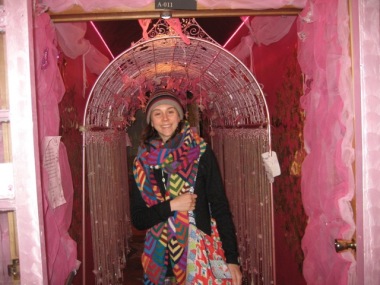
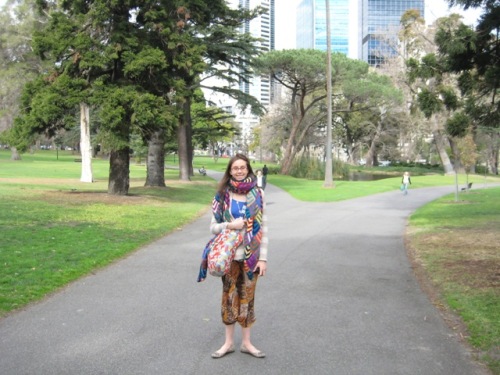
Most importantly, since Aussies clearly love color, pattern and fabric, my handiwork was a great way to meet people throughout the trip, guaranteed to inspire a friendly inquisition or admiration that often led to further conversation. As soon as you find common ground with the people around you, differences in geography and culture quickly fade. I was a long way from home for three weeks, but I never felt out of my element. This vacation only confirmed what I have always suspected, that patchwork has a fundamental and universal appeal.

